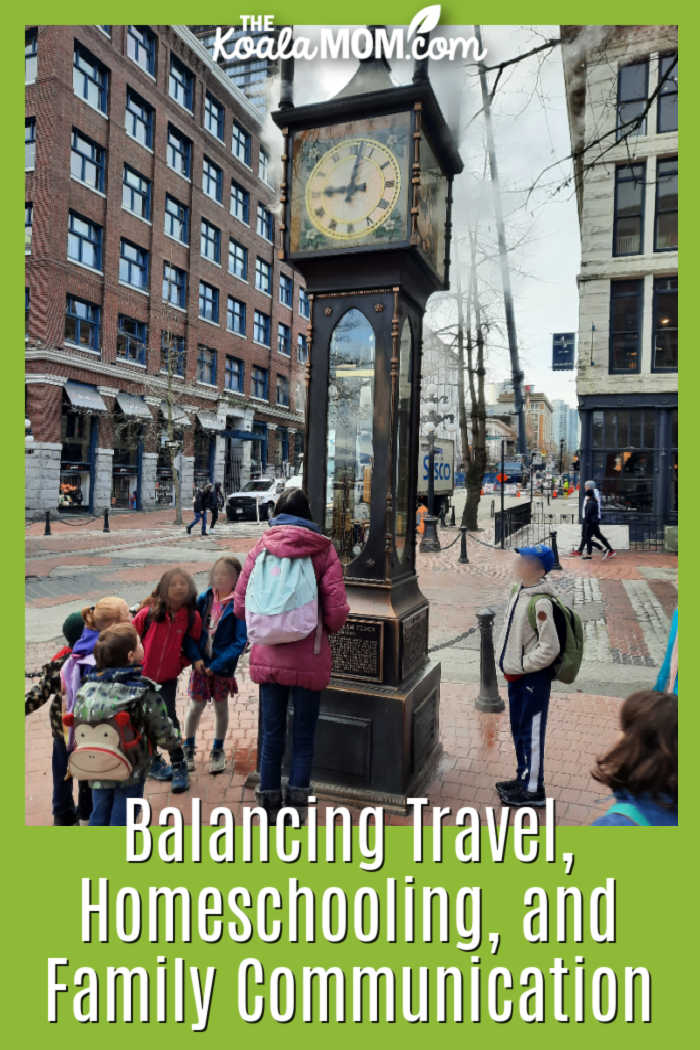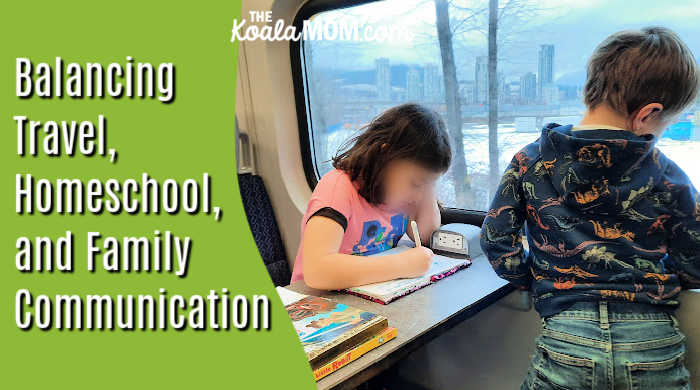Raising children today often means juggling many roles. Families who homeschool, travel frequently, or blend both lifestyles face unique challenges in communication, organization, and structure. Parents must find ways to keep their children engaged academically while also nurturing family connections, even when routines look different from traditional school and work schedules.
One area that often comes up in these households is how to manage communication when kids start becoming more independent. Parents want to stay connected while also teaching responsibility. Balancing this with travel or homeschooling schedules requires planning and thoughtful choices.

Creating Flexible Learning Routines
Homeschooling families know that routines are important, but flexibility is equally valuable. A strict 8 a.m. to 3 p.m. school day does not always make sense when travel is involved or when learning opportunities present themselves in unexpected ways. Parents often find that building routines around themes or goals allows for structure without rigidity.
Morning lessons may focus on core subjects like reading, math, and science. Afternoons might be spent exploring museums, historical sites, or local parks while traveling. This balance allows children to associate education with both study and experience. Parents who homeschool during travel (also known as roam schooling) often see how real-world exposure deepens classroom knowledge, making lessons more memorable.
The Role of Communication in Family Life
Communication takes on new importance when families spend extended periods together, especially on the road. Whether it is planning daily activities, organizing lessons, or coordinating with relatives back home, parents need reliable ways to stay in touch. Children also benefit from having age-appropriate communication tools that give them some independence without overwhelming them.
As children grow, parents naturally start thinking about when the right time might be to introduce their first phone. Some families prefer to wait until middle school, while others may find that travel or homeschooling schedules create the need earlier. When kids are away at extracurricular activities or navigating a new city with family, having a phone can bring peace of mind.
Building Healthy Boundaries Around Technology
Introducing devices into a homeschool or travel lifestyle requires clear boundaries. Technology can support education and safety, but it can also distract. Parents can set expectations early by creating family rules about screen time and by explaining why these rules exist.
For example, some families establish technology-free mornings, keeping devices away until lessons are complete. Others use timers that limit how long children can access entertainment apps. Parents who travel may set specific times for calling relatives or friends so that kids remain connected without constantly reaching for their phones. These boundaries help children see technology as a tool rather than a crutch.
Travel as a Learning Opportunity
Traveling with children creates a natural classroom. Geography, history, language, and social studies come alive when families explore new places. A visit to a historical monument is not only a field trip but also a chance to connect with lessons about government, culture, and human achievement. Parents who homeschool while traveling often notice that children retain knowledge better when they experience it firsthand.
Travel also teaches adaptability. Delayed flights, new foods, or cultural differences provide valuable lessons in patience and problem-solving. Parents can guide children through these experiences, showing how challenges can become growth opportunities. Journaling, photography, and storytelling can be integrated into travel routines, helping children reflect on what they learn along the way.
Parenting Through Responsibility and Trust
Homeschooling and frequent travel require trust between parents and children. Parents cannot monitor every moment, nor should they. Giving children age-appropriate responsibilities, such as helping pack bags, following a daily itinerary, or managing a small allowance, builds confidence.
Communication tools also play a role in developing responsibility. When children have access to a phone, parents can guide them on how to use it respectfully and responsibly. This includes lessons on digital manners, safety, and the importance of balancing online and offline activities. By framing these tools as part of growing independence, parents foster trust while still maintaining oversight.
Two Practical Approaches for Parents
Parents who homeschool or travel can benefit from practical approaches that support learning and communication.
- Blending Curriculum with Exploration: Use destinations as opportunities for hands-on learning. If visiting a coastal city, explore marine biology. If traveling through a historical region, incorporate lessons on local history and culture. Children are more likely to stay engaged when lessons feel connected to their surroundings.
- Introducing Technology Gradually: Rather than giving children unrestricted access, start with limited features such as calling and texting. Over time, parents can expand privileges as children demonstrate maturity. Resources that explain how to choose the right first phone can be helpful when making this decision.
Both of these approaches help families stay grounded while also embracing the unique opportunities of homeschooling and travel.
Supporting the Whole Family
Balancing homeschooling, parenting, and travel requires more than lesson plans and itineraries. It also means supporting the emotional well-being of the entire family. Parents who spend significant time together with their children may need intentional breaks for self-care. Scheduling quiet moments or setting aside time for individual hobbies can keep family life harmonious.
Children also benefit from consistent rituals. Whether it is a bedtime story, a weekly family movie night, or regular phone calls with relatives, small traditions create stability. These habits remind children that no matter where they are in the world, family connection remains constant.

Looking Ahead as a Family
Families who homeschool or travel together often find that their experiences create lasting bonds. Children learn flexibility, independence, and curiosity. Parents gain the satisfaction of watching their children thrive in both structured and spontaneous learning environments.
With careful planning, clear communication, and thoughtful use of technology, these families can create a lifestyle that balances education, exploration, and connection. The key is finding systems that work for each household rather than following rigid expectations.
Homeschooling and traveling with children is not without its challenges, but the rewards are significant. Families who embrace the journey often discover that the lessons learned along the way are just as important as those taught in any classroom.

No Responses Yet